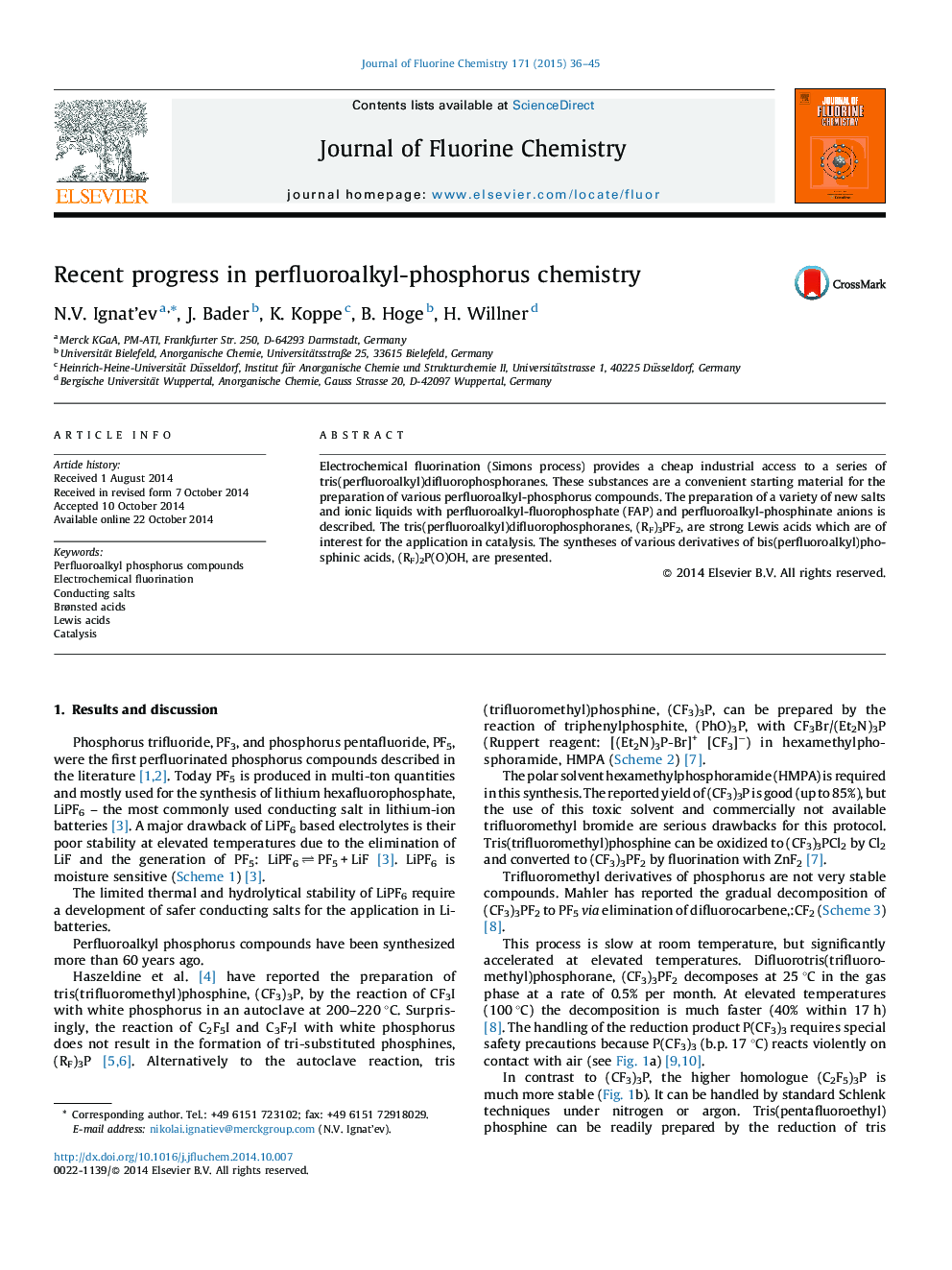| Article ID | Journal | Published Year | Pages | File Type |
|---|---|---|---|---|
| 1313599 | Journal of Fluorine Chemistry | 2015 | 10 Pages |
•The phosphoranes, (RF)3PF2, are produced by means of electrochemical fluorination.•Li[(C2F5)3PF3] possesses an advantageous properties.•Bis(perfluoroalkyl)phosphinic acids are efficient Brønsted acid catalysts.•The tris(perfluoroalkyl)difluorophosphoranes, (RF)3PF2, are useful Lewis acid catalysts.•The phosphoranes, (RF)3PF2, are useful material to produce variety of chemicals.
Electrochemical fluorination (Simons process) provides a cheap industrial access to a series of tris(perfluoroalkyl)difluorophosphoranes. These substances are a convenient starting material for the preparation of various perfluoroalkyl-phosphorus compounds. The preparation of a variety of new salts and ionic liquids with perfluoroalkyl-fluorophosphate (FAP) and perfluoroalkyl-phosphinate anions is described. The tris(perfluoroalkyl)difluorophosphoranes, (RF)3PF2, are strong Lewis acids which are of interest for the application in catalysis. The syntheses of various derivatives of bis(perfluoroalkyl)phosphinic acids, (RF)2P(O)OH, are presented.
Graphical abstractThe tris(perfluoroalkyl)difluorophosphoranes, (RF)3PF2, provide convenient access to broad variety of perfluoroalkyl-phosphorus compounds that are of interest for various applications: conducting salts, ionic liquids, Brønsted and Lewis acid catalysts.Figure optionsDownload full-size imageDownload as PowerPoint slide
